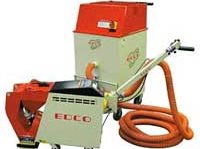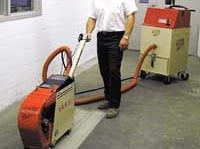Surface Preparation Steps: Clean, Roughen and Repair
The steps of concrete surface preparation fall into three phases: cleaning, profiling, and repairing.
1. Clean the Concrete
Remove all chemicals, oil, and grease from the concrete first. Curing compounds, oils, grease, chemicals, or other contaminants should be removed. Chemicals and oils are often removed with high-pressure washing. Dirt and grime can be removed with a degreaser worked in with a floor polisher. Learn more about cleaning concrete.
Shotblasting is often used to clean the floor- a benefit with this method is that it "profiles" the floor to receive the bond coat at the same time the floor is cleaned. A "water drop" test can be used to determine if a surface is clean. Water beads on surfaces contaminated with sealers, curing compounds, oil, and grease.
Here are some products & techniques you may find useful during the cleaning process:
Shop all surface preparation supplies
2. Roughen or "Profile" the Surface
The most important characteristic for a coating or overlayment bonding is the texture or "profile" of the concrete.
Need help with your project? Find concrete contractors near me.
For Concrete polymer-modified overlays:
Contractors and manufacturers are split between roughening the concrete by mechanical profiling or acid etching. Large or difficult surfaces will usually be mechanically profiled.
For Floor Coatings in Industrial or Commercial Applications:
Mechanical profiling is the method of choice. Thomas Kline of Structural Preservation Systems notes that acid etching can provide adequate surface preparation for horizontal installations of coatings and toppings in areas that are well ventilated and require a spark and dust free environment. But they will not remove petroleum-based products or animal vegetable oils from the concrete.
William Perenchio of Wiss, Janney, Elstner Associates, Inc. notes that acid etching should only be done when no alternative means of preparation is possible.
Again, the safest measure is to follow the floor coating manufacturers installation instructions.
3. Repair Surface Defects
First, get the specifications from the coating or overlay manufacturer for repair materials to be used under the coating for material compatibility.
Grind or chip all projections from the concrete greater than 1/16 "
Remove unstable concrete, and clean and fill holes or cracks, and other surface defects with an approved material. Understand if the patch should be roughened or smooth, and how long they need to cure before being covered.
Learn more about crack repair or see an example of a subfloor leveling project.
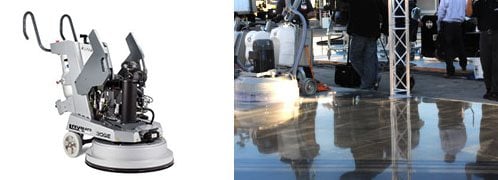 Propane Grinding Machines
Go cordless with the LAVINA elite series
Propane Grinding Machines
Go cordless with the LAVINA elite series
 Concentrated Concrete Cleaner
Clean and profile concrete in a single step
Concentrated Concrete Cleaner
Clean and profile concrete in a single step
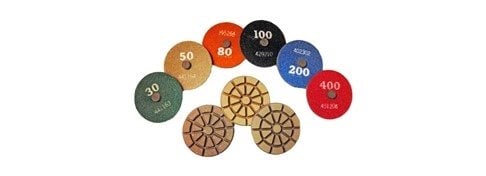 Surface Prep Diamonds
Superior floor with reduced steps
Surface Prep Diamonds
Superior floor with reduced steps
 CPS G-170 Electric
17" Floor Grinder 230 volt ($7,600)
CPS G-170 Electric
17" Floor Grinder 230 volt ($7,600)
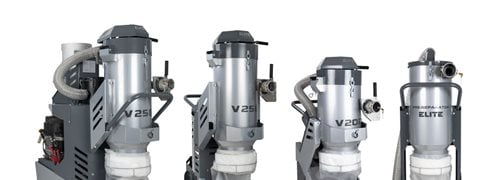 LAVINA® ELITE Vacuums
Ranging from 16" to 32"
LAVINA® ELITE Vacuums
Ranging from 16" to 32"
How to Get a Surface Preparation Job off to a Good Start
You can't ever be too prepared. The information below will help you get organized before starting surface preparation work. Without taking these things into consideration you could end up doing more harm than good.
Architects, Engineers, Property Owners, and Other Important People: Job Planning
Job planning requires the important people in a project know any special requirements they have prior to the project being put out to bid.
- Time schedules
- How work will be done around existing operations
- Allowing drying time if water is used in the surface preparation process
- Acceptable levels of dust
- Possible fumes
- Noise levels
These are all problems that can be avoided if known about and planned for ahead.
Examine the Surface
Prior to contracting for a job or awarding a project- the contractor must conduct a survey of the concrete surface in its current shape.
If excessive laitance is present (a weak layer of cement and fines on the concrete surface), this material must be removed down to solid concrete. The coating or overlay will not bond properly to the weak layer of concrete.
The surface should be checked for existing sealers, curing materials, grease, oil, efflorescence, and dirt that need to be removed. In short, you want no surprises.
Know the Job Specifications
Most job specifications for surface preparation state the surface should be "sound, free from surface defects dry, and clean." Each of these terms is subjective, so it is important that the job specifications, the coatings or overlay specifications, and the expectations of the architect and/ or project engineer are in alignment.
Specifications should also say how uniform, clean, rough, and what strength the concrete substrate should be prior to a coating or overlay installation.
Proposals for surface preparation specifications should clearly spell out cleaning methods, profiling method, and surface defect repair procedures.
Other specifications may include time schedules and acceptable levels of noise and dust. Also, is there time in the schedule for concrete to dry to the required moisture level if water is being used in the cleaning process? If the specifications dont cover these issues- make sure they get covered.
Start at the End if You Want a Good Floor Coating or Decorative Overlay Job
All of us in construction are familiar with the "I did it per the specs" excuse. It is when the job is not turning out as planned and a reason must be found as to why...then the finger pointing begins. The problem is often the job specifications and the product specifications do not coincide. The job progresses, and then there are problems...either now or later.
Smart owners, property managers, and designers will start at the end and ask, 'What is the end result of the new floor we are looking for?' Review reputable products that will produce that result.
Then write the specifications following the product manufacturers instructions for installation. Then it becomes a matter of selecting a qualified contractor and making sure the installation is done properly.
This is the reason the Design Build Industry is flourishing. It works.
